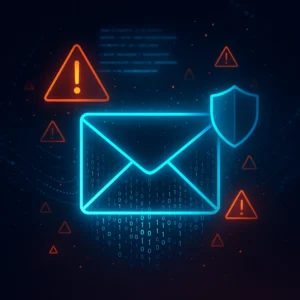Phishing continues to be the most successful cyber attack vector...
Read More
Phishing continues to be the most successful cyber attack vector worldwide, not because attackers are getting lucky, but because their techniques are evolving faster than user awareness. In 2025, phishing is powered by AI generated emails, deepfake voice calls, QR code baiting, and fake MFA prompts that mimic legitimate login systems perfectly.
This guide breaks down the latest phishing attack trends, how they work, and how anyone from beginners to security professionals, can spot them early.
AI-Powered Email Phishing
AI has completely transformed phishing in 2025. Attackers now use large language models to generate:
- Perfect grammar
- Natural tone
- Region specific wording
- Personalized greetings
- Convincing signatures
How to spot AI phishing emails
- Generic greetings with flawless grammar — looks professional but lacks personal context
- Unusual urgency — “Immediate action required”, “Your account will close in 3 hours”
- Email domain mismatch — e.g., @amaz0n-service.com
- Links masked as legitimate but redirect using URL shorteners
Even when the message looks perfect, the sender domain never lies. Always inspect it.
Deepfake Voice Phishing (Vishing)
Attackers now clone voices using 10–30 seconds of audio from social media or public videos. They impersonate:
- Managers
- IT support staff
- Bank representatives
- Delivery services
What to look for
- Calls requesting passwords, codes, or verification
- A familiar voice that sounds “too perfect” or slightly off
- No caller ID match
- Requests made outside normal work hours
If someone claims to be a colleague but asks for sensitive info, hang up and call the official number.
Fake MFA Prompts
This is one of the most successful modern phishing techniques. Attackers trigger fake MFA screens during login attempts or send MFA approval spam until the user accepts one.
Signs of MFA phishing
- You receive an MFA prompt without logging in
- Repeated MFA requests within seconds
- Push notifications from unfamiliar IP locations
- Odd-looking login pages asking you to “re-enter MFA”
If in doubt: deny all MFA prompts, then change your password immediately.
QR Code Phishing (Quishing)
QR codes are everywhere, restaurants, banks, posters, and delivery notifications. Attackers now embed malicious URLs into QR codes on:
- Fake parking signs
- Payment cards
- Emails
- Physical flyers
How to detect a bad QR code
- Hover to preview the URL (most phones support this)
- Check if the domain looks suspicious or misspelled
- Avoid scanning QR codes on unsolicited emails
- Never scan QR codes requesting login details
If a QR code unexpectedly asks for credentials, it’s a scam.
Lookalike Domains & Homograph Attacks
Attackers register domains that look identical to legitimate ones using Unicode characters.
Example:
apple.com vs аpple.com
(one letter is Cyrillic, not English)
What to check
- Highlight the link (don’t click)
- Look for odd characters
- Check the full URL before submitting any information
Homograph phishing is nearly invisible unless you inspect the link carefully.
Smishing (SMS Phishing) is Getting Smarter
Phishing via SMS is now ultra targeted. Attackers impersonate:
- Banks
- Delivery services
- Government departments
- Mobile carriers
Red flags in SMS messages
- Shortened links (bit.ly, tinyurl)
- “Your parcel is awaiting payment”
- “Your bank account is locked” messages
- Phone numbers not matching official channels
Legitimate institutions never send URLs asking you to log in through SMS.
Social Media Phishing
Attackers impersonate official accounts or send direct messages claiming:
- You’ve violated terms
- You’ve won a prize
- Your account is at risk
How to spot it
- Newly created accounts claiming to be support
- No verification badge
- Unusual message tone
- Links that redirect through tracking services
Always access your account through the app not links from DMs.
Conclusion
Phishing has evolved far beyond simple “Nigerian prince” emails. In 2025, attackers use AI, deepfakes, fake MFA prompts, and highly personalized tactics. The only reliable defense is awareness: understanding how these attacks look and staying skeptical of anything unexpected whether it arrives by email, text, QR code, or voice.
Staying informed is the strongest security tool you have.
✅ Call to Action
Have you fallen for one of these types of phishing attacks? Leave a comment down below.
If you want more hands on cybersecurity guides, threat breakdowns, and practical security advice, follow EagleEyeT for weekly insights. Together, we can strengthen your digital defenses one article at a time.
Google Calendar Puts Task Management Right Where You Work
In a world overloaded with apps, notifications and fragmented workflows,...
Read MoreMicrosoft to Remove WMIC in Windows 11 25H2: What It Means for IT Pros and Enterprise Environments
As Microsoft continues modernizing the Windows ecosystem, legacy components are...
Read MoreEDPB Draft Guidelines on Pseudonymisation: What You Need to Know
The European Data Protection Board (EDPB) has released its draft...
Read More



Leave a Reply